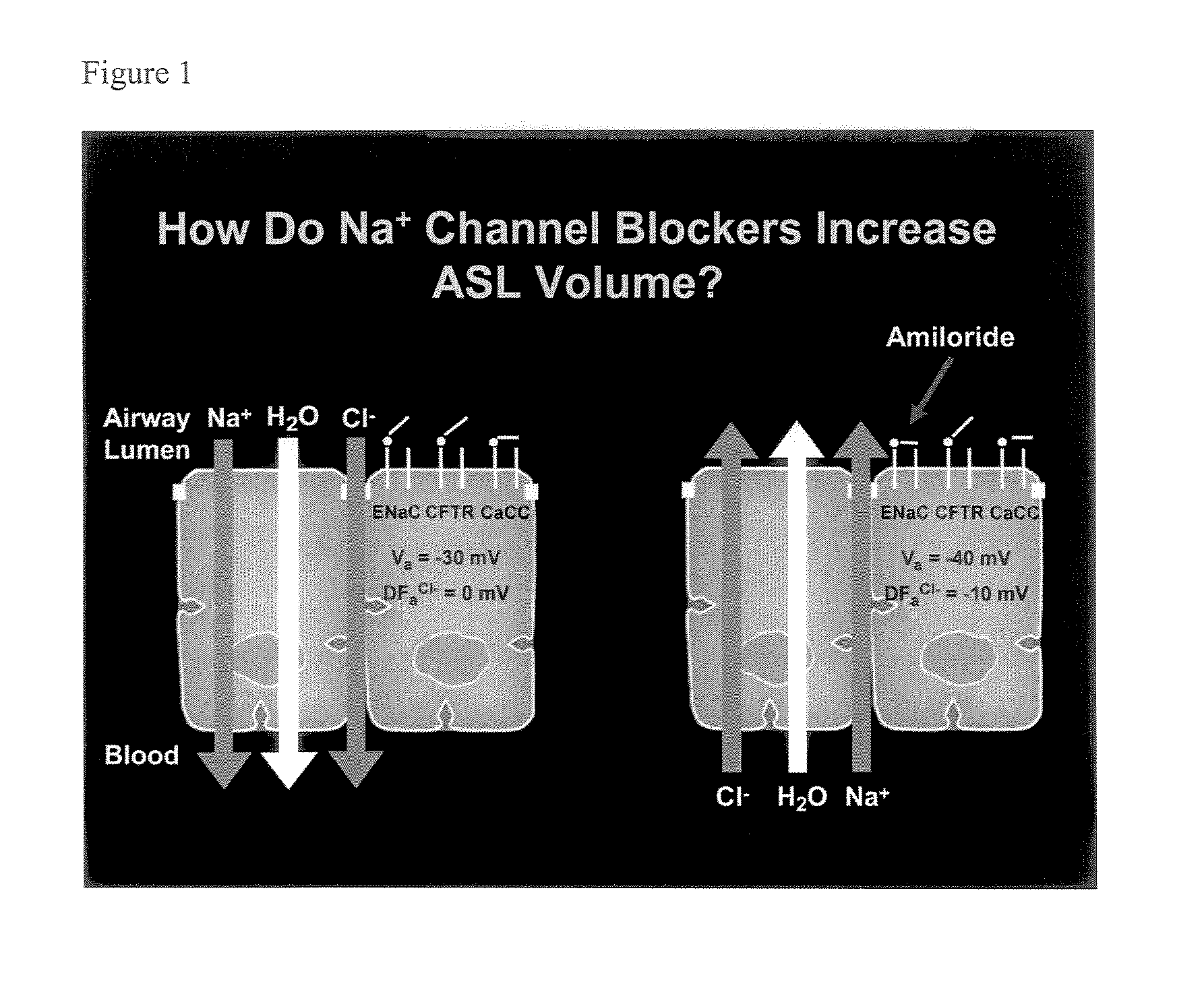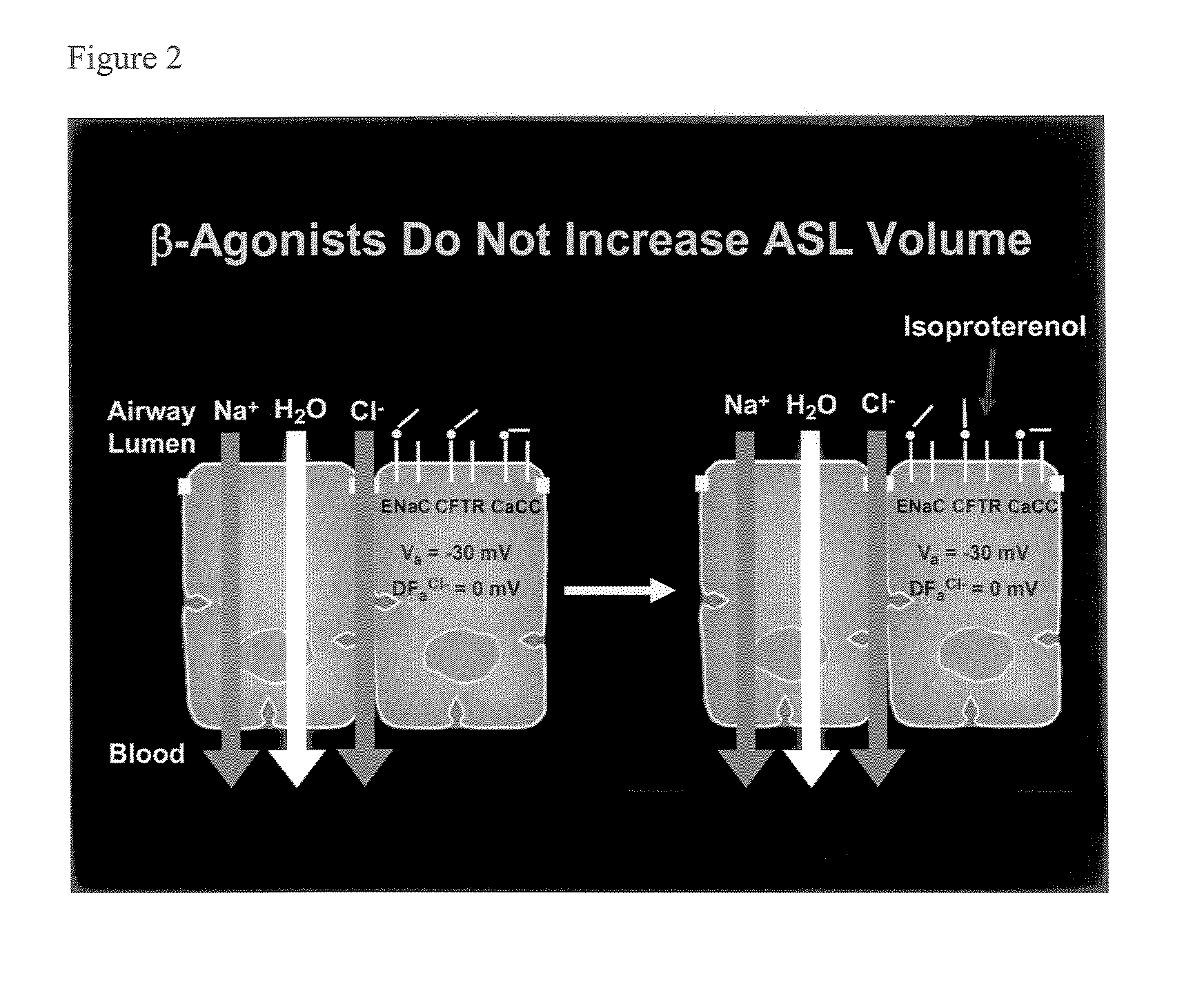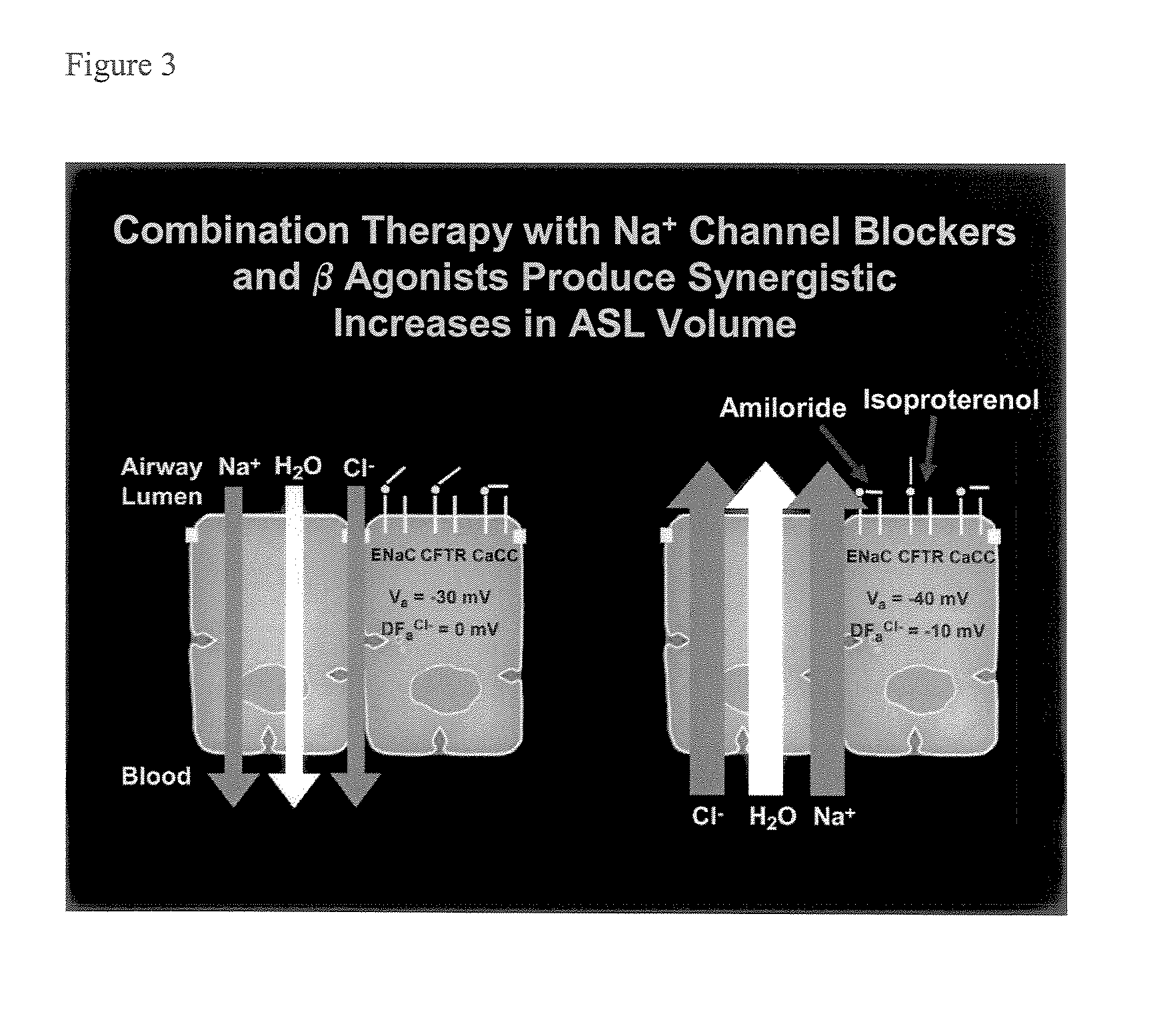Phenyl substituted pyrazinoylguanidine sodium channel blockers possessing beta agonist activity
a sodium channel blocker and sodium channel blocker technology, applied in the direction of biocide, drug composition, aerosol delivery, etc., can solve the problems of inability to clear mucus from airway surfaces, inability to clear mucus reflects an imbalance between the amount of liquid, and the inability to clear mucus, etc., to achieve less reversible, less reversible, and more potent
- Summary
- Abstract
- Description
- Claims
- Application Information
AI Technical Summary
Benefits of technology
Problems solved by technology
Method used
Image
Examples
example 1
Synthesis of N-(5-{2-[4-(4-{4-[N′-(3,5-diamino-6-chloropyrazine-2-carbonyl)guanidino]butyl}phenyl)butylamino]-1-(R)-hydroxyethyl}-2-hydroxyphenyl)formamide (12) (Scheme 1)
[0338]
1-(4-Benzyloxy-3-nitrophenyl)ethanone (2)
[0339]A mixture of 1-(4-hydroxy-3-nitrophenyl)ethanone (5.92 g, 32.70 mmol), sodium iodide (4.90 g, 32.70 mmol), potassium carbonate (13.55 g, 98.00 mmol), and benzyl bromide (5.04 mL, 42.50 mmol) in acetone (120 mL) was stirred under reflux for 66 h. After removal of solvent by rotary evaporation, the resulting residue was diluted with dichloromethane and insoluble inorganics were filtered off. The filtrate was concentrated in vacuo and the resulting residue was purified by flash silica gel column chromatography eluting with dichloromethane to give benzyl ether 2 as a white solid (8.24 g, 93%): 1H NMR (500 MHz, CDCl3) δ 2.60 (s, 3H), 5.32 (s, 2H), 7.18 (d, 1H), 7.41 (m, 5H), 8.12 (dd, 1H), 8.44 (d, 1H).
1-(4-Benzyloxy-3-nitrophenyl)-2-bromoethanone (3)
[0340]Phenyltrime...
example 2
Synthesis of N-{4-[4-(4-{bis-[2-(R)-hydroxy-2-(4-hydroxy-3-formylaminophenyl)-ethyl]amino}butyl)phenyl]butyl}-N′-(3,5-diamino-6-chloropyrazine-2-carbonyl)-guanidine diacetic acid salt (14) (Scheme 2)
[0347]
{4-[4-(4-{bis-[2-(4-hydroxy-3-formylaminophenyl)-2-(R)-hydroxyethyl]amino}-butyl)phenyl]butyl}amine diacetic acid salt (13)
[0348]A mixture of {4-[4-(4-{bis-[2-(4-benzyloxy-3-formylaminophenyl)-2-(R)-hydroxyethyl]-amino}butyl)phenyl]butyl}carbamic acid benzyl ester (10) (0.17 g, 0.19 mmol), palladium dihydroxide (50 mg, 10% Pd(OH)2 on carbon, 50% wet), eight drops of acetic acid, methanol (10 mL), and dichloromethane (5 mL) was stirred at rt for 18 h under atmospheric hydrogen pressure. The catalyst was filtered through a Celite pad and the filtrate was concentrated by rotary evaporation and further dried under high vacuum to give the desired amine diacetic acid salt 13 as a white solid (0.10 mg, 98%); m / z (ESI) 579 [C32H42N4O6+H]+.
N-{4-[4-(4-{Bis-[2-(R)-hydroxy-2-(4-hydroxy-3-formy...
example 3
Synthesis of N-(5-{2-[2-(4-{4-[N-(3,5-diamino-6-chloropyrazine-2-carbonyl)guanidine]butyl}phenoxy)ethylamino]-1-(R)-hydroxylethyl}-2-hydroxyphenyl)-formamide (19) (Scheme 3)
[0350]
{4-[4-(2-Benzylaminoethoxy)phenyl]butyl}carbamic acid benzyl ester (16)
[0351]Benzyaldehyde (0.74 ml, 7.31 mmol) was added to a solution of 4-[4-(2-aminoethoxy)phenyl]butylcarbamic acid benzyl ester (15) (5.00 g (˜50% purity by NMR), 7.30 mmol) dissolved in anhydrous dichloroethane (50 mL). The resulting solution was stirred at ambient temperature for 7 h. Sodium triacetoxyborohydride (4.10 g, 19.35 mmol) was added slowly and the reduction continued for 60 h. The reaction was quenched with aqueous sodium bicarbonate (50 mL) and then extracted with ethyl acetate (3×25 mL). The combined organic extracts were washed sequentially with water and brine, and dried over anhydrous sodium sulfate. A white solid precipitated out during the drying and collected by dissolving it in dichloromethane and then filtering off ...
PUM
| Property | Measurement | Unit |
|---|---|---|
| size | aaaaa | aaaaa |
| size | aaaaa | aaaaa |
| size | aaaaa | aaaaa |
Abstract
Description
Claims
Application Information
 Login to View More
Login to View More - R&D
- Intellectual Property
- Life Sciences
- Materials
- Tech Scout
- Unparalleled Data Quality
- Higher Quality Content
- 60% Fewer Hallucinations
Browse by: Latest US Patents, China's latest patents, Technical Efficacy Thesaurus, Application Domain, Technology Topic, Popular Technical Reports.
© 2025 PatSnap. All rights reserved.Legal|Privacy policy|Modern Slavery Act Transparency Statement|Sitemap|About US| Contact US: help@patsnap.com



